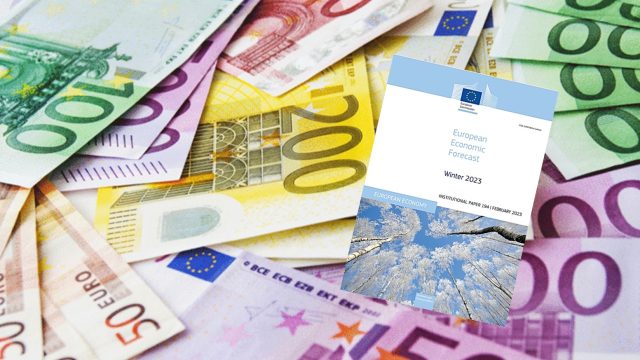
While countries as Spain, Poland and Hungary are expected to reach a growth of around 5 percent, Sweden ends up far behind with half as much growth for 2022.
Ever since joining the Union, Sweden has been a net payer to the European Union’s budget. But now forecasts presented by the European Commission indicate that Sweden can be seen as the union’s “black sheep” with very weak economic growth.
On a more positive note
The European Commissioner for Economy, Paolo Gentiloni, recently presented the so-called “winter report” that which conveys forecasts for growth in the member countries during the calendar year just ended.
And 2022 ended on a more positive note than feared for the economies of the EU countries. That was thanks to falling energy prices as the winter became mild, which reduced the consumption, and successful purchases of gas mainly from countries other than Russia.
Growth for EU countries for 2022 is estimated at 3.5 percent – higher than in both the US and China. For some countries as Spain, Poland and Hungary was forecast even higher growth at a level of around 5 percent.
But some economies shrink
But Sweden ends up at the absolute bottom with an expected grown at only 2.4 percent. In the course of last year, private consumption was constrained by high inflation and the growing burden of mortgage loans. A tighter monetary policy eroded real disposable incomes for households.
The report also states: “Net trade subtracted from growth in the context of the large terms-of-trade shock with import growth, propelled also by investment, surpassed export growth.”
Sweden is the only EU country where the economy is expected to shrink during 2023. The very high level of private lending is a strong contributing factor to the fact that Sweden has had and is expected to have the worst growth figures in the Union.
Growth of under one percent 2023
For the EU countries as a whole, the Commission make a forecast of growth at the level of only 0.8 percent for 2023. Even worse for some contries such as Sweden, which is expected to see its economy to contract by 0.8 percent. The reason is that Swedish households will further adjust their consumption expenditure as a response to the reduced real disposable income, the great uncertainty about how high interest rates will be on their housing loans and due to the increasing unemployment.
Economic Commissioner Gentiloni was asked at the press conference when the winter report was presented whether Sweden can be considered a “canary in the coal mine” – a warning sign of what can await the rest of the EU.
Geniloni doesn’t want to see it that way. According to him, part of the explanation for the Swedish situation lies in the fact that the pandemic affected the country’s economy to a lesser extent than in other countries and that Sweden thus did not suffer the same decline as other countries, which are now recovering from more extensive shutdowns. The low growth figures for Sweden may thus be an effect of this.
Both light and darkness
Economic forecasts as this are fringed with uncertainties, but the winter report gives some positive signs. For example, it is stated that the demand for goods and services may increase faster than expected thanks to the fact that the falling energy prices are now beginning to be noticed in the wallet.
But at the same time: the war in Ukraine and other global tensions bring continued risks of high inflation. And this especially in countries like Sweden, where companies and households are heavily indebted and have variable mortgage interest rates to a large extent.
Not good enough
He underlined that although the economic outlook has improved in recent months, the forecast of growth of 0.8 percent this year and 1.6 percent for 2024 is not good.
– Europeans still face a difficult time ahead where growth is still expected to slow and inflation will only gradually release its grip on purchasing power, Paolo Gentiloni concluded.



 Subscribe
Subscribe